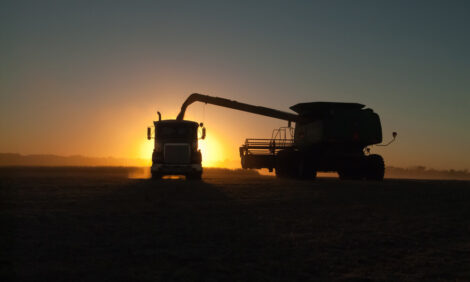



CME: More Pigs in the Pipeline
US - Last Friday afternoon, USDA’s National Agricultural Statistics Service (NASS) released a bunch of reports, all at 3:00pm Eastern Time, write Steve Meyer and Len Steiner.The two NASS reports with implications for the future are: 1) Quarterly Hogs and Pigs, and 2) monthly Cattle on Feed. They also released monthly Cold Storage, which provides a key picture of frozen meat quantities.
In today’s Daily Livestock Report (DLR) we will focus on the hog and cattle on feed reports.
The Quarterly Hogs and pigs report showed more pigs in the pipeline than anticipated.
As of 1 June, the breeding herd was a bit higher than the average pre-report estimate, but was well within the expected range. The number of pigs born per litter in the March through May timeframe was very close what was anticipated.
However, the number of sows farrowed during March-May was well above expectations, increasing 1.5 per cent year-over-year. In the previous report (March 1st) NASS reported farrowing intentions for March-May at 0.5 per cent below a year earlier. Market analysts were looking for a 0.6 per cent year-over-year increase.
So, market hog numbers and therefore the total inventory were larger than anticipated. Instead of categories in the report being in the range of unchanged to up 1 per cent year-over-year, results fell in the range of increasing 1 per cent to 2 per cent.
As of 1 June, the number of market hogs was 1.9 per cent (1.16 million head) above 2015’s (see graphic).
NASS did increase reported June-August farrowing intentions compared to that in their prior report.
As of 1 March, NASS reported June-August farrowing intentions down a large 3.5 per cent year-over-year, a drop that analysts found difficult to justify.
As of 1 June, NASS revised June-August farrowing intentions to down 2.3 per cent compared to 2015’s; based on recent trends, that amount of slippage may not materialise.
The first report by NASS for September through November farrowing intentions in 2016 also were down (slipping 1.1 per cent year-over-year). However, for now, most analysts will likely be sticking close to their pre-report estimates of up about 1 per cent from 2015’s.
Friday’s Cattle on Feed report was largely within pre-report expectations.
Compared to a year ago, during May fed cattle marketed were 4.9 per cent above 2015’s, placements were up 9.6 per cent, and the June 1 cattle on-feed inventory rose 2.2 per cent. With one extra slaughter day in May of 2016 compared to 2015, the daily marketing rate is even with year ago numbers.
On the placement side, significant year-over-year increases were seen in the Southern Plains. This was as expected, due to the significant declines in placements seen in that region a year ago.
Within placement weight categories, year-over-year decreases showed up in the less than 600 pound and the 600-700 pound group. The 700-800 pound and over 800 pound categories increased 23 per cent and 20 per cent, respectively, year-over-year.
Heavy cattle coming off of wheat pasture grazing mainly contributed to these weight category increases.
These placements, although significantly larger than a year ago, have gotten us back to “normal” placement levels and do not indicate a glut of cattle coming to market later in the year, yet.
The on-feed inventory count is now the largest for 1 June since 2011’s. The number of cattle on feed over 120 days continues to decrease generally and relative to last year, down 7 per cent year-over-year (or a decline of 300,000 head).
Briefly, frozen stocks (cold storage) as of May 31st of beef and pork have continued to decline year-over-year, but the opposite has occurred for chicken and dairy products. Those changes in levels reflect important broad market trends.








